Why the need for Safe Harbour
Prior to the amendments, the provisions of the Corporations Act governing corporate insolvency focused on the need for Directors to appoint Voluntary Administrators of a company if they suspected that the company was insolvent in order to avoid the risk of the Director being found personally liable for debts that the company incurred whilst it was trading insolvently.
Frequently, the appointment of a Voluntary Administrator is followed by the appointment of a Liquidator and results in the total loss of any goodwill of the business of a company and the fire sale of assets. Too often, the outcome of such appointments is that unsecured creditors receive little or no recovery of debts they are owed by the company.
The purpose of the Safe Harbour provisions is to encourage a culture of restructuring in Australia by offering protection to Directors who are proactively taking steps to achieve a better outcome for the company than the outcome likely to flow from the immediate appointment of an Administrator or Liquidator.
The new Safe Harbour provisions are found in Section 588GA of the Corporations Act and effectively provide a carve out from the existing insolvent trading regime in Section 588G.
Insolvent trading & Directors’ Personal Liability
Under Sections 588G(2) and 588M of the Corporations Act, a Director of a company to whom the Safe Harbour provisions do not apply is personally liable for loss or damage that a creditor suffers in relation to a debt where:
- The company was insolvent at that time the debt was incurred, or became insolvent by incurring the debt,
- There were reasonable grounds for suspecting that the company was insolvent or would so become insolvent, and
- The Director was aware at that time that there were such grounds for so suspecting, or a reasonable person in a like position would be so aware.
Under the general insolvent trading provisions, the Director is effectively liable for the unpaid debt owed to the creditor where the Director fails to prevent the company from incurring the debt in the above circumstances.
Significantly, contraventions of Section 588G may also give rise to a monetary penalty.
When is a Company Insolvent
Generally, the test for determining whether a company is insolvent is whether the company is able to meet its debts as and when they fall due. In accounting terms, the test for insolvency is based on the company’s cash flow, but the Balance Sheet should not be overlooked.
Courts determine insolvency by considering a company’s financial position as a whole. This requires an examination of the commercial reality of what resources the company has available to meet its debts, and whether, and if so when, those resources can be realised, either by sale or as security for a loan.
As Safe Harbour may, however, apply from the time that a Director suspects that a company is or may become insolvent, it is recommended that Directors act promptly to ensure the safe harbour applies as soon as they have any concerns about the company’s ability to pay its debts as and when they fall due.
What is “Safe Harbour”?
A Director will be safe harboured from the provisions of Section 588G(2) of the Corporations Act if:
- At a particular time after the Director starts to suspect the company may become or be insolvent, the Director starts developing one or more courses of action that are reasonably likely to lead to a better outcome for the company, and
- The debt is incurred directly or indirectly in connection with any such course of action during the safe harbour period.
For the purposes of working out whether a course of action is reasonably likely to lead to a better outcome for the company, the Courts may have regard to whether the Director is:
- Properly informing themselves of the company’s financial position,
- Taking appropriate steps to prevent any misconduct by officers or employees of the company that could adversely affect the company’s ability to pay all of its debts,
- Taking appropriate steps to ensure that the company is keeping appropriate financial records consistent with the size and nature of the company,
- Obtaining advice from an appropriately qualified entity who was given sufficient information to give appropriate advice, or
- Developing or implementing a plan for restructuring the company to improve its financial position.
What is a Better Outcome
“Better outcome” for the company, means an outcome that is better for the company than the immediate appointment of an Administrator, or Liquidator, of the company.
In most cases the appointment of an Administrator or Liquidator of a company will result in the complete or substantial loss of the value of goodwill of a business and the realisation of assets for fire sale values only. Depending on what secured creditors exist and the business or assets of the company, Voluntary Administration or Liquidation will, therefore, result in a shortfall for secured creditors and no return to unsecured creditors at all.
The early evaluation of the company’s financial position and an assessment of the likely outcome of the Administration or Liquidation of the company are essential for maintaining safe harbour protection and assessing whether proposed courses of action are reasonably likely to lead to a better outcome.
However, as the outcome for a company and its creditors of Administration or Liquidation is often dire, any restructuring outcome that is likely to result in an improved return for creditors, whether by a turnaround or sale of business (and goodwill) or assets for market value (as opposed to a fire sale situation), will be a better outcome for the company.





















